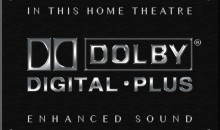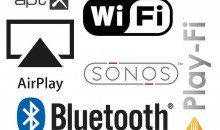The Future of Television is Apps and Shows
Television is archaic. It really is. In a world where everything seems to be obtained via a la carte (music, movies, food…), television is still largely sold as an all-or-nothing proposition. The most common mode of distribution for television is currently via network “streams”. These are stations which carry sequential shows interrupted (and funded by) commercial breaks. These networks have some shows which people actually want to see, and many which they do not. It’s not that no one wants to see some of these shows, but most certainly no one wants to see every show on a single network.
That means you’re ultimately paying for something you don’t consume—or really want.
And it gets worse. Not only do you not consume a majority of shows spoon fed on a particular station, you don’t want to watch entire swathes of stations. I personally don’t watch USA, MTV or Speed Network. Ever. Those stations could completely disappear and I wouldn’t even notice.
But I have to pay for them as part of the “package” deal afforded to me by my cable or satellite TV provider.
Why? That’s just how it’s done.
But what if your TV show was an app?
Apps are the Future of Television
I mean, practically-speaking, everything else is an app, why not your TV channels or your favorite show? I think that if anyone actually did the math the cable and satellite providers would go out of business in a week’s time. Let me break it down for you.
The average cable TV bill is around $100/month—no, I’m not joking. Let’s figure out what that looks like in various scenarios of viewing habits. First, we’ll make some assumptions to give our math some teeth:
- We’re going to assume that every show is an hour long and we’ll disregard movies for now since those are a different category.
- We’re going to assume that, should shows become apps, they will cost $1 per episode. We not only think that’s fair, we think the economy of scale would force that price pretty quickly based on the set example of the music industry (if a piece of music costs $1 and you can listen to it over and over again, how much should a 60 minute episode costs that you are likely to only watch once, or perhaps twice in your lifetime?)
- We’re going to ignore the discussion of commercials. It’s not that it isn’t important, but it doesn’t factor into the cost discussion of this article. It’s likely that $1/episode TV apps would include commercials.
- We’re going to ignore antenna. Antenna service only serves to make these models look even better, since free live TV in high-definition would further reduce the amount of shows you’d need to purchase.
- We’re going to ignore news “packages” since much of that will invariably end up being either free or available via antenna or some other commercial-sponsored mechanism.
So now let’s look at some practical mathematical models of what a month’s worth of TV might look like for different people:
The Seldom or Particular Viewer – 30 hours/month
This type of viewer doesn’t watch a ton of TV. They have their shows, but they also have a busy family or a busy work schedule and so they relax with television, but don’t plop down in front of it for hours upon hours. If you paid $1/episode and watched just an hour per day of television (not including movie rentals), that would mean you were paying for up to 7 different shows on a weekly basis. I don’t know about you, but I don’t watch 7 different shows. Right now I’m watching 4. Take inventory of how many shows you’re currently involved in at once time and then move on to the next example.
The Moderate Viewer – 60 hours/month
Now we’re getting somewhere. Remember, the typical cable TV or satellite bill is $100/month for a premium package. But at $1/episode, 60 hours means you’re following 15 different shows each week! And you know what? Maybe you do watch that much TV and this makes a lot of sense. If you do, then buying your television shows as apps would still cost you less than cableTV, and you’d have an extra $40/month in your pocket at the end of the month, or perhaps you could spend it on Netflix services or VUDU.
The Drooling Guy Who Lives in His Mom’s House – 100 hours/month*
Seriously, if you’re watching this much TV in a month you better be recovering from surgery or have a similarly good excuse. And now we hit the point of this article. It would take you watching over 3 hours of TV each day to hit this number. And your cable TV company is charging you this much per month already—as if you do! $100/month is like following 25 different weekly shows! That’s a lot of TV! I’m not sure I could even name that many shows that are on today that are worth my time.
*Apologies to my buddy—you know who you are!
The Argument for the Future of Television Shows as Apps
The argument for the future of television being app-based is three-fold. Walk through these and you’ll have a better understanding if whether you’re ready for television to take that next evolutionary step, or whether you want to pay for the convenience of being able to channel surf rather than search for great shows and pay for only what you consume.
1. How much TV do you really watch?
And how many hours per month are you putting in? Answer that question and you’ll likely lead yourself to the concept that television show apps make a lot of sense. The delivery method could be an Apple TV, Roku box or Chromecast. In either case, the concept of purchasing apps instead of paying for hundreds of stations (and thousands of TV shows) you’ll never watch makes a whole lot of sense.
2. You don’t really need a DVR
DVRs were designed to allow you to record shows that were real-time in nature. With app-enabled televisions, the concept of a DVR goes away. Everything exists as an app and resides in the cloud—as it should. With an app, you’re already accessing your TV shows on-demand, so there’s no reason to have to record them in real time. Seriously, it’s like we’re living back in the era of analogue 1″ video tapes being queued up in giant freezing cold clean rooms monitored by antisocial geniuses running around in white lab coats.
No, just click the button and watch your show. Simple. You can still pause it, rewind, or watch it again whenever you feel like.
3. Do you really need to entertain the news media who are just trying to get your attention anyway?
All the good news is online. These days, when I tune into the nightly news (once in a very blue moon) it seems to me like they’re just trying desperately to outdo each other in showing the most grotesque shock-value coverage they can find. We’re always either on the brink of war or social or economic collapse. And while that may even be true, I can get those stories and interviews from the web or peruse my news in a less sensationalist manner online in the written form. I don’t need to help feed the attention-getting news machine that has taken over what used to be investigative reporting.
What About Movies?
Yes, what about movies? I subscribe to Netflix, rent new releases at Redbox, go out and watch them in theaters. Occasionally, I even purchase a streaming rental from VUDU on my Blu-ray player. The bottom line is that none of this has anything to do with my cable TV bill. The only thing I’d miss would be the occasional bout of channel surfing where I can watch Ocean’s 11 for the 6th time or maybe catch another precious re-run of Dark Shadows. I still can’t believe Depp didn’t win an oscar for that stellar performance. With a little planning, however, I can line up those discs for viewing from Netflix. Better yet, movies (following the same app format) would only run $2 in HD for a rental, and I can just watch them as I like.
[top-seller category_id=’23’ product_count=’4′ title=’Top Selling Blu-ray Players’]
Summarizing the Concept and Sealing the Deal
You have to watch a whole lot of television and movies before you get anywhere near that $100/month cable bill. That’s really the point here. Television shows as apps make a whole lot of sense. User reviews are going to be built right into the system and the delivery method can be spread across all the places you want to be. You can watch your shows at a friend’s house, on your laptop, from your iPad or—if you’re really desperate—on your smart phone. It won’t matter, because you’ll be streaming the shows from the cloud.
The next time you think that $1 per show is a rip-off, just do the math. The real rip-off is the one you’ve been gladly enduring for years—your cable bill. Wrap your head around the new way of television consumption and you’ll be set for a whole new world of great shows and better options.
Apple has been talking about a television for a long time, and several companies are in negotiations with distributors and networks at this very moment. If you think for a second that this isn’t coming around the corner you’re kidding yourself. Television shows are going to be sold as apps in the very near future, and it’s just a questions of whether or not consumers will step back and see the tremendous value that offers compared to the overpriced all-you-can eat buffets we’ve endured for years.







Pingback: Disrupting Cable Television - Innovation Hacking